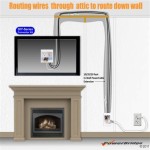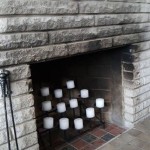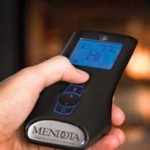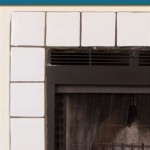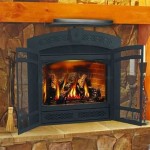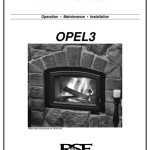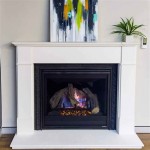Painting Fireplace Doors: A Comprehensive Guide
Fireplace doors serve as both a functional and aesthetic component of a fireplace. They provide a barrier against sparks and embers, enhance safety, and contribute to the overall design of a living space. Over time, however, the finish on these doors, typically metal, can become worn, faded, or simply outdated. Painting fireplace doors offers a cost-effective way to revitalize a fireplace's appearance and prolong the lifespan of the doors themselves. This article provides a detailed guide to the process of painting fireplace doors, covering preparation, materials, and application techniques to achieve a durable and professional-looking finish.
Preparing the Fireplace Doors for Painting
Proper preparation is paramount to achieving a smooth, even, and long-lasting paint job on fireplace doors. The initial steps involve removing the doors from the fireplace if possible. This facilitates easier access and maneuverability during the cleaning and painting stages. If removing the doors is not feasible, adequate protection must be established around the fireplace opening to prevent paint splatter and dust contamination.
Following removal, the doors should be thoroughly cleaned to eliminate any existing dirt, soot, grease, or rust. A wire brush or scraper can be used to dislodge loose debris and rust flakes. Subsequently, a degreasing cleaner specifically designed for metal surfaces should be applied. This ensures that any residual grease or oil is removed, allowing the primer and paint to adhere properly. The doors should then be rinsed thoroughly with clean water and allowed to dry completely before proceeding.
The next stage involves surface preparation to promote paint adhesion. Sanding the surface of the doors creates a slightly roughened texture, providing "tooth" for the primer to grip. Medium-grit sandpaper (around 120-grit) is suitable for this purpose. The entire surface should be sanded evenly, paying particular attention to areas with existing paint chips or imperfections. After sanding, the doors must be wiped down with a tack cloth to remove any sanding dust. This step is crucial to prevent dust particles from becoming trapped in the paint finish.
If rust is present, it must be treated before painting. A rust converter product can be applied to chemically neutralize the rust and prevent it from spreading. These products typically transform the rust into a stable, paintable surface. It is essential to follow the manufacturer's instructions for application and drying times.
Masking any areas that are not to be painted, such as glass panels or hinges, is the final step in the preparation process. High-quality painter's tape should be used, ensuring a clean and crisp line. The tape should be pressed firmly against the surface to prevent paint bleed-through.
Selecting the Right Materials
Choosing the appropriate materials is critical for achieving a durable and heat-resistant finish on fireplace doors. The selection centers around using high-temperature paints specifically formulated for applications exposed to elevated temperatures, such as fireplaces and stoves. Standard paints are not suitable, as they will not withstand the heat and will likely blister, crack, or emit unpleasant odors.
A high-temperature primer is the first layer to be applied. The primer serves as a bonding agent between the metal surface and the topcoat paint. It also provides a uniform surface for the paint to adhere to, improving the overall appearance and durability of the finish. High-temperature primers are designed to withstand the extreme heat generated by a fireplace and prevent the paint from peeling or flaking. Opting for a primer that is compatible with the chosen topcoat paint is recommended to ensure proper adhesion and performance.
The topcoat paint should also be a high-temperature formulation. These paints are typically available in aerosol cans for easy application. They come in a variety of colors and finishes, including matte, satin, and gloss. Black is a common choice for fireplace doors, but other colors can be used to complement the surrounding décor. When selecting a paint color, consider the overall aesthetic of the room and the style of the fireplace. Consider the paint's temperature rating and ensuring it exceeds the maximum temperature expected from the fireplace doors is crucial. Exceeding the rating will result in paint failure.
In addition to the primer and paint, other necessary materials include: sandpaper (medium-grit), wire brush or scraper, degreasing cleaner, rust converter (if needed), tack cloth, painter's tape, drop cloths or protective sheeting, and safety equipment such as gloves and a respirator. A well-ventilated workspace is also essential to minimize exposure to paint fumes.
The selection of brushes or spray equipment is crucial. Aerosol cans are the most common choice for high-temperature paints due to their ease of use and even application. If using a spray gun, make sure it is compatible with the type of paint being used and that the nozzle is adjusted to produce a fine, even spray. Brushes should be high-quality synthetic brushes designed for use with enamel paints.
Applying the Paint
The application process involves several steps to ensure a consistent and durable finish. Before starting, the workspace should be properly ventilated and protected with drop cloths or protective sheeting. Safety equipment, including gloves and a respirator, should be worn throughout the painting process.
The high-temperature primer should be applied first. Follow the manufacturer's instructions for application, drying times, and the number of coats needed. Typically, one or two thin coats of primer are sufficient. Each coat should be allowed to dry completely before applying the next. Apply the primer in smooth, even strokes, overlapping each pass slightly to ensure complete coverage. Avoid applying the primer too thickly, as this can lead to runs or drips.
Once the primer has dried completely, the high-temperature topcoat paint can be applied. Again, follow the manufacturer's instructions for application and drying times. Apply the paint in thin, even coats, overlapping each pass slightly. Multiple thin coats are preferable to one thick coat, as they are less likely to run or drip and will result in a more durable finish. Allow each coat to dry completely before applying the next.
When using an aerosol can, hold the can approximately 10-12 inches from the surface and move it in a smooth, steady motion. Avoid spraying too close to the surface, as this can cause the paint to run. When using a spray gun, adjust the nozzle to produce a fine, even spray and maintain a consistent distance from the surface.
After applying the final coat of paint, carefully inspect the surface for any imperfections, such as runs, drips, or uneven coverage. If any imperfections are found, they can be touched up with a small brush or by lightly sanding the affected area and applying another thin coat of paint. While the paint is still wet, examine the paint lines where the tape was applied. Remove the painter's tape carefully while the paint is still slightly wet. This will help prevent the paint from peeling off with the tape and will result in a cleaner, sharper line.
Allow the paint to cure completely before reinstalling the fireplace doors. Curing times can vary depending on the type of paint used and the environmental conditions. Follow the manufacturer's instructions for curing times. Once the paint has cured, the fireplace doors can be reinstalled and the fireplace can be used as normal. Regular cleaning of the doors with a mild detergent and water will help maintain the finish and prolong its lifespan.
Avoid cleaning the doors with harsh chemicals or abrasive cleaners, as these can damage the paint finish. Periodically inspecting the painted surface for signs of wear or damage, such as scratches, chips, or peeling, is vital. Any damaged areas should be touched up promptly to prevent further deterioration. By following these guidelines, fireplace doors can maintain an attractive appearance and provide reliable service for years to come.

Fireplace Door Update With Spray Paint Roots Wings Furniture Llc

How To Update Fireplace Brass

How To Paint A Brass Fireplace Screen Without Removing It Create Eoy

Fireplace Door Update With Spray Paint Roots Wings Furniture Llc

Painted Fireplace Doors 6 Steps With S Instructables

How To Paint Fireplace Doors And Vents Dans Le Lakehouse

Before After Painting Fireplace Doors And Brick Looks Like Mine Exactly Remodel Paint

Brass Fireplace Update East Coast Creative

How To Spray Paint A Brass Fireplace Insert Erfly House

Painted Old Brass Fireplace Cover With Rustoleum High Heat Black Paint Love The New Look Brick Makeover Remodel
Related Posts

